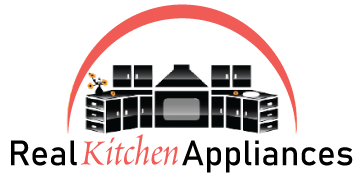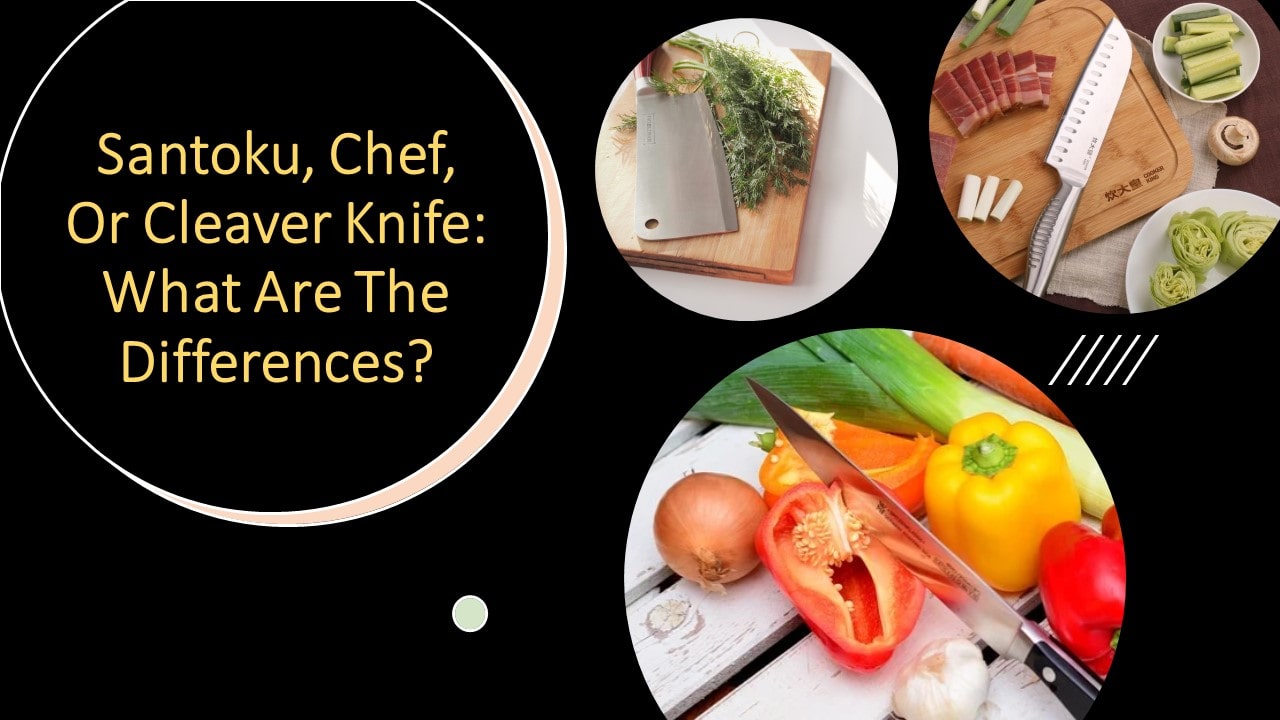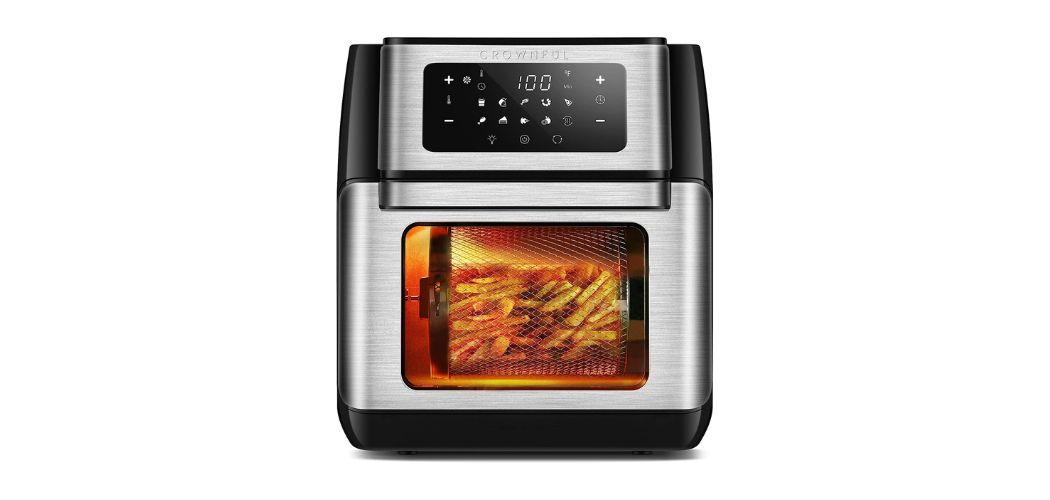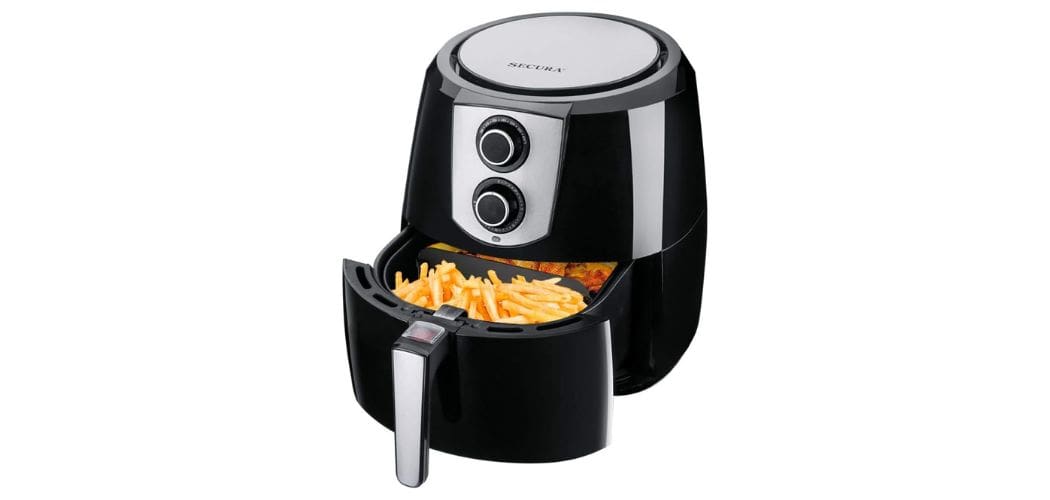You may come across a whole list of possibilities when you decide to buy kitchen knives. While your uses may range from simple chopping to heavy meat slicing, you will get plenty of options to choose from.
However, when preparing food, there are three essential general-purpose knives that everyone from amateur cooks to expert chefs uses: the Santoku, chef knife, and a cleaver knife.
But how are these three different? Do these knives have specific uses? Read on to know all about these knives and which one you should choose for your daily kitchen tasks.
Table of Contents
What Is A Santoku Knife?
There’s a good chance you’ve seen an all-purpose kitchen knife with hollowed-out grooves on the blade’s edge. Due to the multiple similarities, most people mistake this knife for a standard kitchen knife.
The Santoku knife is designed for home chefs who wish to make Western-style food. The Santoku knife is the Japanese variation of the master knife. The length of the blade is usually between 5.1 and 7.9 inches long.
“Three virtues” or “three uses” is the literal translation of Santoku. This multifunctional knife can dice, chop, and mince a wide range of meals. This factor makes it a valuable tool to have on hand at all times.
What Is A Chef’s Knife?
Chef’s knives, also known as cook’s knives, originated many years ago due to influences from Solingen, France, and Asia—three cultural capitals in the heritage of knifemaking.
The chef’s knife is most commonly used in most contemporary kitchens.
It is the most powerful of all blades due to its adaptability.
You can engage in one friendly kitchen tool with a chef’s knife.
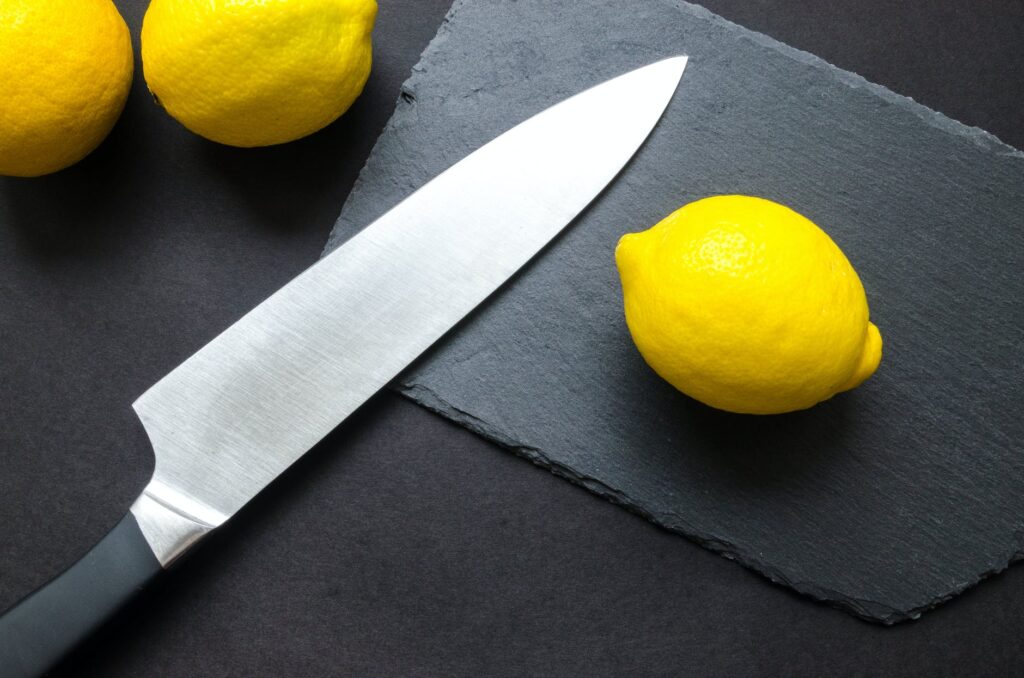
You may use a chef’s knife for slicing, chopping, mincing, carving, breaking up bones, crushing, and pretty much anything else.
Chef’s knives can handle almost any cutting work in the kitchen, but they aren’t the best option for delicate, precise cutting, such as making sashimi or filleting fish. These tasks need a smaller, lighter, and more agile knife.
What Is A Cleaver Knife?
The cleaver is a big knife that comes in a variety of forms. Most of them have rectangular blades.
They are often used in butcher shops, but some individuals also use them daily in the kitchen.
It’s ideal for chopping up large chunks of soft bone. You may also use it to cut through tough meat slices.
The broadside of the cleaver is perfect for smashing tiny veggies like garlic.
Furthermore, the cleaver is ideal for scraping-out minced food.
The fascinating aspect is that cleavers have existed since the late 17th century, although they used to be called “clever”.
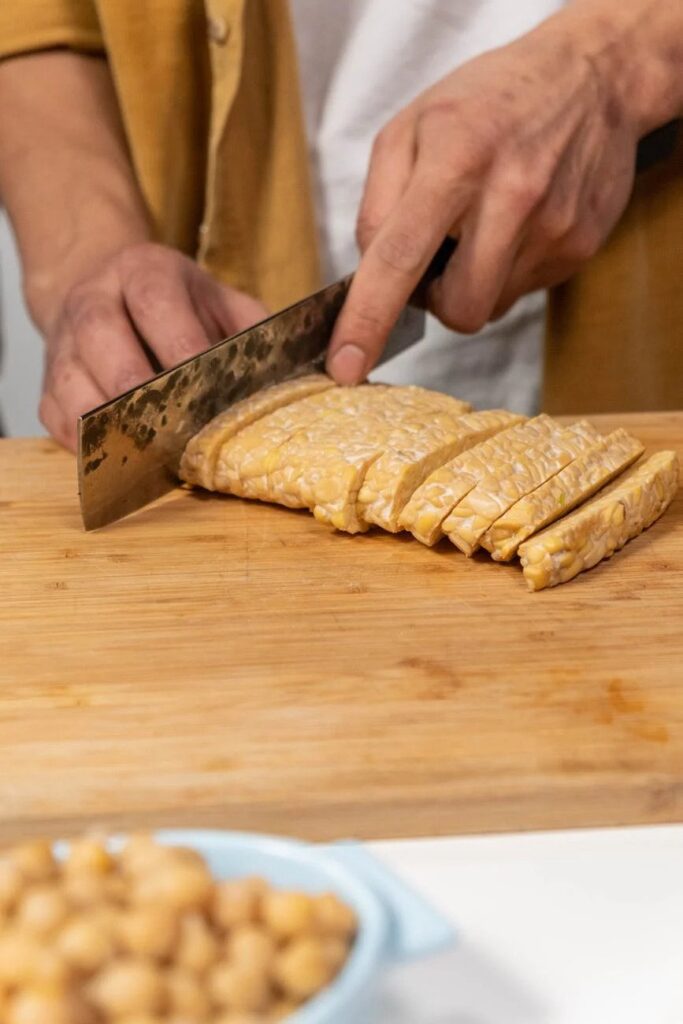
The blade of a cleaver usually has a robust edge that can handle cutting thick flesh, bones, cartilage, and even the board. It is made of sturdy and soft steel.
The Differences Between A Santoku, Chef, And Cleaver Knife
Design:
The main distinction between the three knives is their design. The looks of the knives allow anybody to tell the difference just by glancing at the blades.
Santoku knives feature a flat blade and a curved spine. The cutting board connects to the flat edge, which produces a finely chopped or minced finished product.
The robust blade hones to an exceptional degree, but the blades have a blunt end, or as people call it, a less pointed end. Given the blunt, sharp end, you can utilise it to slice items, but it’s not a good option for piercing or chopping, particularly with tough meats.
Cleaver knives imitate butcher knives in appearance, although they are significantly smaller. They feature a broad belly, a sharpened flat side, and a full back to give them weight, which comes in handy for deboning meat or cutting tough-skinned vegetables of larger sizes.
Because of the large back, they have more significant weight to the blade, which aids in chopping. On the other hand, the contemporary chef’s knife has a bent edge that bends progressively from the bottom to the top, with the back following suit.
It ends in a relatively straight, sharp point. The chef’s knife’s flexible blade allows for a rocking movement or rock chop–ideal for swiftly slicing a carrot or spring onions. You could also use the edge in a slashing action to prepare meat.
Size:
Santoku knives are available in sizes ranging from 5” to 8”. The blade is at a size that is excellent for slicing, dicing, and shredding herbs, vegetables, and soft meat. The measure also lends enough weight to the knife to prevent the hands from overworking if used for an extended period.
If you like the size of the Santoku knife and how its functions. Then you would love similar knifes such as Utility Knife, which has an even smaller size.
Cleaver knives are stronger and more significant than Santoku blades. The size ranges from 6” to 12”. The most popular size recommended by specialists for this knife is 10-12”.
Compared to Santoku knives, the larger size adds substantial weight. The added weight aids in the chopping and deboning of particular meat.
Chef’s knives offer various options of blade configurations to pick from when it comes to size. These knives often have blade lengths ranging from four to five inches to fourteen inches or over.
Large chunks of meat, cantaloupes, and pumpkins are simpler to handle with longer blades. Some Chef’s knives also exceed 20 inches when you include the grip length. Although they are available in various sizes, the most popular blade lengths are 6 and 8 inches.
Purpose:
Santoku knives are the chefs’ preferred way of cutting and slicing tiny vegetables.
The food’s delicacy is optimal due to its reduced weight and manageable size.
When cutting or slicing a specific item, the flat end connects with the wooden board, leaving no region for interaction.
Depending on your strong hand preferences, you may discover a left or right-hand slope, making the knife highly specialized in approaches.
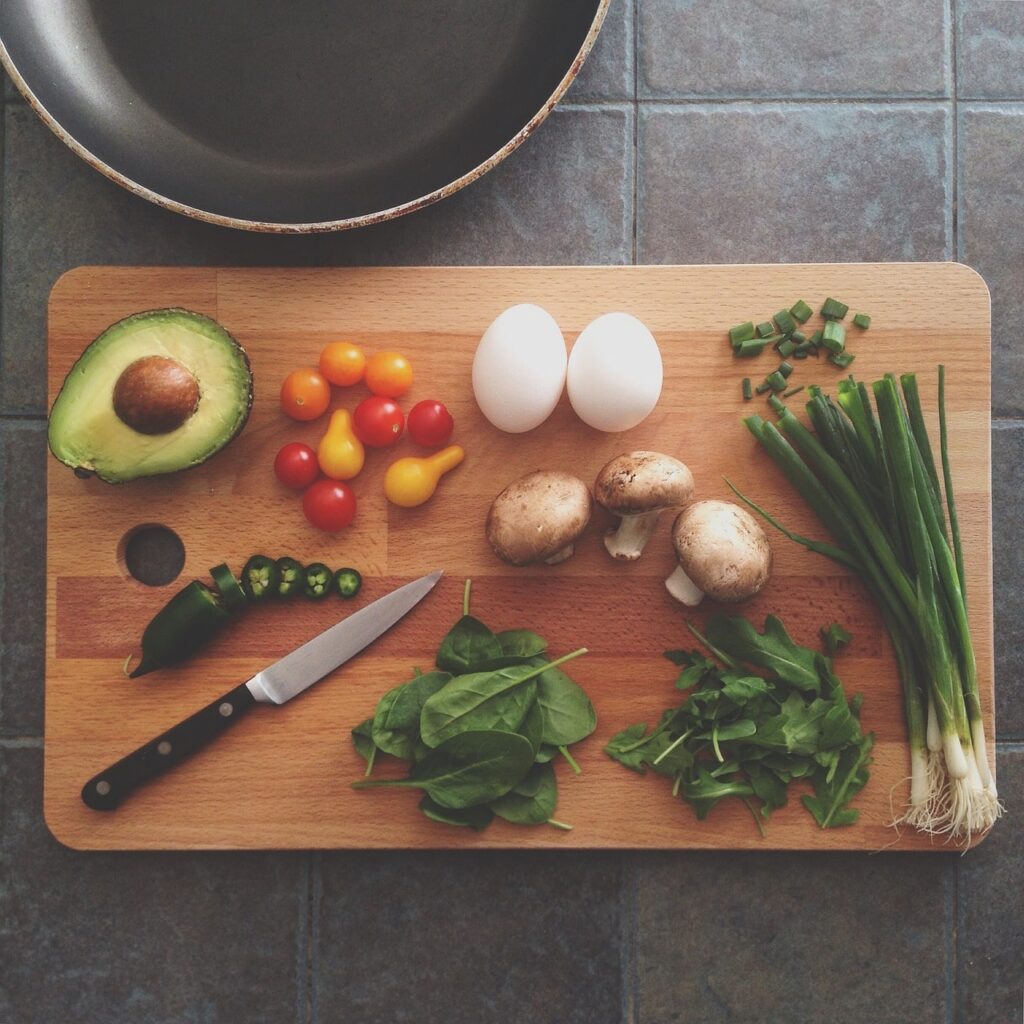
Cleaver knives are larger and heavier than other knives. The flat, hefty metal blade is excellent for deboning meat and cutting larger, hard-skinned crops like pumpkins since it is exceptionally honed.
Since certain meats are more challenging than others, you’ll need a cleaver knife instead of a Santoku knife to help you. In this scenario, a sharpened blade with a higher weight than a cleaver knife comes in handy, providing adequate power to cut through such foods.
The chef’s knife’s purpose is slightly different from the other two knives. It falls in between a Santoku and a cleaver. You may think of Santoku as a thin knife used for softer vegetables and meat. However, a cleaver focuses on rough use.
You can use a chef’s knife for more delicate flesh and vegetables and thick meat. Purposefully, a chef’s knife is the most versatile knife among the three.
Price:
When it comes to Santoku knives, they are much more cost-effective than cleaver knives.
You can acquire a good Santoku for $30, but you’ll need twice that much on an excellent cleaver, which will set you back $60.
Chef knives are the costliest among the three knives. However, this depends on the brand and size of the knife you choose.

In general, stamped chef’s blades will be less expensive than forged knives. The price point of a chef’s knife ranges from $30 – $400.
Knives made with high-quality materials, complex production processes, and distinctive designs such as multilayer steel are often more expensive. Once you’ve established a budget for your kitchen, making a pick will be simple.
Usage:
If you consume tough-boned meat more frequently than any other kind of food, cleaver knives are the best option. Blades of cleavers are heavier, affecting accuracy and delicacy and making your hands tired if used for extended periods of time.
On the other hand, if the chopping board contains tough meat or an enormous vegetable or melon, a cleaver should be used.
Santoku knives are versatile knives as long as you adhere to 2 criteria: accuracy and delicacy. You can perform a precise cut because of the smaller size and lower weight. People may also use the knife to demonstrate their culinary prowess while cooking.
Since the blade is broad, heavy, thick, and rises to a sharp point, the chef’s knives are great for heavier items like root fruits, veggies, and fatty meats.
Santoku and chef’s knives are ideal for mincing herbs, cutting vegetables, slicing fruit, and chopping particular types of meat.
It’s much easier to identify which knife is perfectly adapted for a job if you consider the edges of both kinds of knives. If you’re breaking down a watermelon, cabbage head, or entire chicken, a chef’s knife is the way to go.
Quick Comparison Guide:
| Aspect | Santoku | Cleaver | Chef’s knife |
| Design | They feature a flat blade and a curved spine | They feature a broad belly, a sharpened flat side | It has a bent edge that shifts progressively from the bottom to the top |
| Size | Ranges from 5” to 8” | Ranges from 6” to 12” | Ranges from 6” to 20” |
| Purpose | Preferred for cutting and slicing tiny vegetables | Excellent for deboning meat and cutting larger, hard-skinned vegetable | Does work of both the knives |
| Price | Very economical | More expensive than Santoku | Can come cheaply, but premium ones are expensive |
| Usage | Used for precision cutting | Best for chopping meat | Very versatile, can be used for either work |
FAQs:
Is Cleaver The Best Knife For Fish Scaling?
Yes, you can scrape the scales off with a sharp cleaver knife held at a bit of angle, just like you would with any other knife or fish scaler. This prevents the fish from degrading throughout the operation.
What Is The Purpose Of Knife Sharpening?
Sharp blades are safer than those that are dull. While this may seem contradictory, it is essential for culinary etiquette.
A robust and well-maintained blade slices through meat and veggies with ease and requires less power to remain in a position where you want it. Also, preparing items is much easier if your equipment is in good working order.
What Causes A Knife To Become Dull?
The meat, veggies, and cutting board create friction on the blade’s surface every time you use it. This tears down the surface and dulls it over time.
What’s The Difference Between Honing And Sharpening?
Honing your knife will keep it sharp if it is already strong. It’s a method for maintaining the edge’s ideal angle. Sharpening a blade is a less common occurrence. It entails removing a portion of the knife’s material to re-create an edge.
Final Verdict
Now that you understand the three knives, the issue is: which one should you use? It’s all about your preferences. Each knife type excels at different cutting jobs. Having them all only makes life a little more straightforward in the kitchen.
If you have the money for one knife, purchase a good chef’s knife. They are the most versatile knives on the market, capable of handling most of your everyday demands as a home cook.
